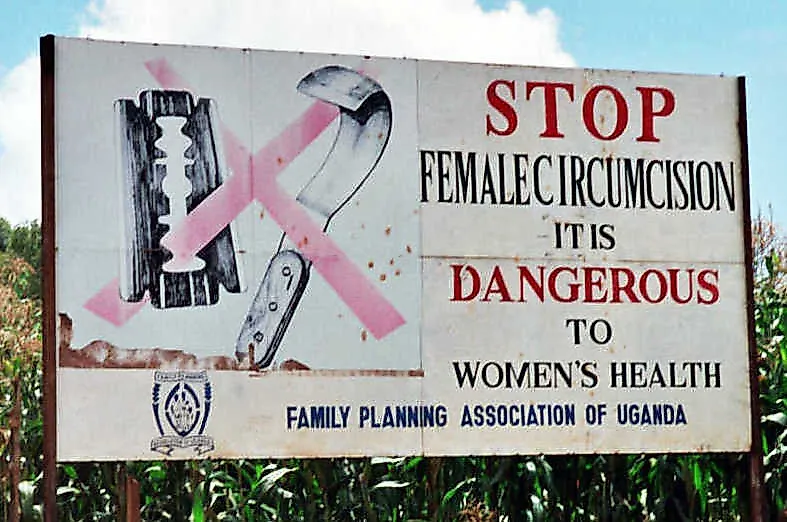Female Genital Mutilation By Country

Societies are defined by their settings and practices and belief systems that make up the culture of a community of a society. Culture plays an important role not only in giving a society or a group an identity but it also acts as a unifying factor for the members of the community. Some cultural practices are considered sacred and any member who violates them or fails to participate in them is considered outcasts.
Even though some traditional practices are highly valued in society, some are may lead to serious health complications or even death. One such traditional practice is Female Genital Mutilation (FGM). The practice of FGM is a process that involves the partial or total removal of female genitalia, that is, labia and clitoris and/or causes injuries to the female genitals for non-medical reasons according to the World Health Organization. FGM can be carried out days after the birth of a baby girl or when the girl reaches puberty and beyond. In most places, the practice is carried out by a traditional circumciser using a blade.
Origin And Prevalence Of FGM
The origin of FGM practice is not clear though some historians believe it originated in ancient Egypt before spreading into East Africa through Sudan hence the name ‘pharaonic’ circumcision. However, other historians believe that the practice came about with the emergence of Islam before spreading across religions and cultures. FGM was meant to ensure virginity before marriage and fidelity after marriage. It was also supposed to initiate a girl into womanhood and increase male sexual pleasure. Currently, Africa has the highest number of FGM cases while the practice is more concentrated in 29 countries.
Countries With The Highest Rates Of FGM/C
Somalia is the leading country in FGM with 98% of women between the ages of 15 and 49 years undergoing the practice. Guinea, Djibouti, and Egypt also have more than 90% of their women between the same ages going for circumcision. However, Egypt has the highest number of women who have undergone FGM with a total of 27.2 million women followed by Ethiopia (23.8 million), Nigeria (19.9 million), and Sudan (12.1 million). Gambia is the leading country with the likelihood of a girl being circumcised because her mother was circumcised with 72% of the girls at risk of FGM. In these countries, the majority of the girls were cut before their fifth birthday by a traditional practitioner. Most of them had their genitalia cut with some flesh removed. Social acceptance is cited as the major reason and contributing factor to FGM in most of these countries.
Women Support And World View
In most countries where FGM/Cutting is common, the majority of women and girls think that the practice should be encouraged. In Benin and Ghana, 93% of the women and girls are in support of FGM/C. Also, in Kenya, Iraq, Niger, Togo, Burkina Faso, and Tanzania, over 85% of women and girls support the practice. However, the practice has the least support among women and girls in Guinea, Sierra Leone, Mali, and Gambia where less than 30% of the women support the practice. The practice has drawn criticism from around the world with the UN urging its 198 member states to ban the practice. Most health practitioners are also reluctant to carry out FGM/C in their health centers.
Impact On The Health And Well-Being Of Women
FGM/C has several implications for women. Some of the implications involve difficulties in childbearing, loss of sexual pleasure among women, the transmission of HIV because of the shared blade, extreme blood loss which may lead to death, and severe pain. The practice may also cause psychological problems to the woman.
A Questionable Tradition : Female Genital Mutilation/Cutting By Country
| Rank | Country | Percentage of girls and women aged 15 to 49 years who have undergone FGM/C |
|---|---|---|
| 1 | Somalia | 98% |
| 2 | Guinea | 96% |
| 3 | Djibouti | 93% |
| 4 | Egypt | 91% |
| 5 | Eritrea | 89% |
| 6 | Mali | 89% |
| 7 | Sierra Leone | 88% |
| 8 | Sudan | 88% |
| 9 | Gambia | 76% |
| 10 | Burkina Faso | 76% |
| 11 | Ethiopia | 74% |
| 12 | Mauritania | 69% |
| 13 | Liberia | 66% |











